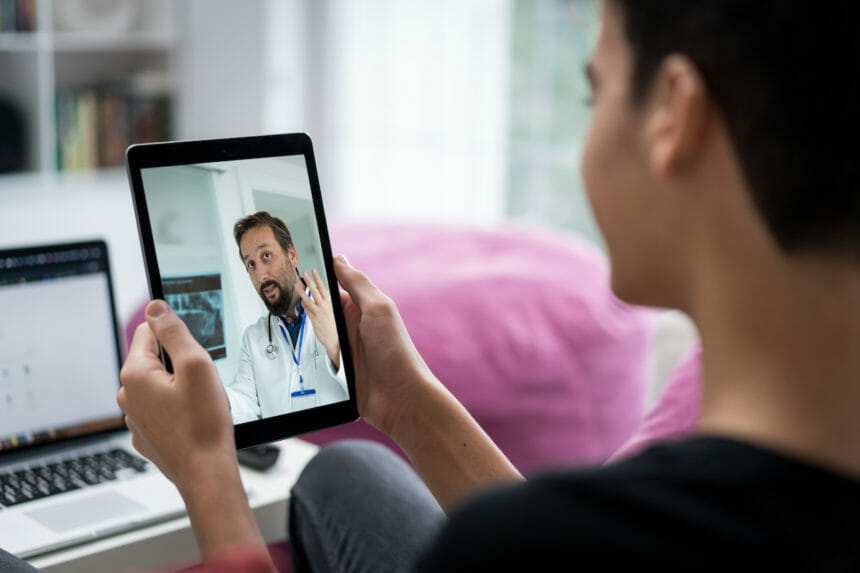Telemedicine is here to stay.
After an explosion of telemedicine use due to the COVID-19 pandemic, more patients are becoming comfortable managing their health remotely. A survey from Doximity on the state of telemedicine estimated that 20% of all medical visits would be virtual in 2020.
That equals out to $29 billion of medical services this year. Looking ahead, Doximity expects telemedicine to continue its growth, making up as much as $106 billion of medical services by 2023.
Prior to the coronavirus pandemic, only 14% of patients had ever used telemedicine. Once the pandemic hit, that jumped to more than 20% of patients, according to Doximity’s survey. Among patients with chronic illness, it was even higher, upwards of 60% of chronic illness patients.
As more patients have started to use telemedicine, their comfort with it also increased. About 27% said they feel more comfortable using telemedicine since the pandemic and 23% plan to use telemedicine once the pandemic ends.
Another 23% of patients said telemedicine provides the same or better care compared to in-person doctor visits. Among patients with chronic illness, that jumped to 53%.
Peter Alperin, Doximity’s VP of product, said a few factors have made patients like using telemedicine: convenience and easy-to-use technology.
“It comes down to convenience,” Alperin said. “Once patients saw that the care they got from their physician was just as good as going into the office they became comfortable [with telemedicine]. Not everytime you go to the doctor does the doctor do a full physical exam. The telehealth visit showed patients that what really mattered was the conversation and connecting with their physician.”
Doximity surveyed 2,000 American adults in July 2020 for this report. The company also pulled physician information from its network of physician users.
The report also found that older doctors were more likely to adopt telemedicine. Physicians in their 40s, 50s and 60s adopted telemedicine at a higher rate than young doctors in their 30s, the report found. Women were also more likely to adopt telemedicine in their work than male doctors.
Among specialties, doctors who work with chronic illnesses used telemedicine the most. Endocrinology specialists were using telemedicine most often, followed by rheumatology, gastroenterology, nephrology and cardiology specialties.
“Those first couple years out of training, they are learning how to be a doctor in a more uncontrolled environment,” Alperin said. “Once they become comfortable, that’s when they are hitting their stride and becoming more efficient. That’s also when many doctors have families and telemedicine can help them fit that into their existing practice structure. It’s not purely a technology solution, telehealth is a new way of delivering care.”
There do remain barriers to telemedicine, especially among traditionally underserved communities like communities of color and low income and rural communities.
The survey found that only 64% of households with incomes below $25,000 have broadband internet access. Also, 73% of non-metropolitan households have internet access compared to 86% of metropolitan households.
Among different ethnicities, Black and Hispanic patients were less likely to have access to a desktop or laptop at home or have high-speed internet access at home, compared to white adults. However, access to smartphones was pretty even among white, Black and Hispanic adults.
“Broadly, we’ve seen drastic changes since pandemic started. As the technology has improved and become easy to use, the technology gap has started to close,” Alperin said. “With our [telemedicine] tool, all you need is a smartphone. Most people these days have a smartphone and people of color have smartphones close to the rate of the general population. From a health equity perspective, there is still more that we can do, of course.”








